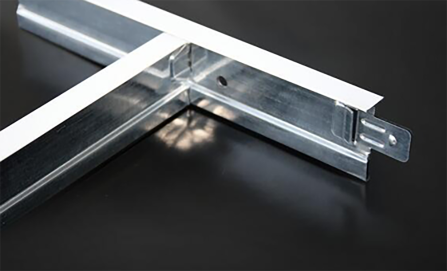Oct . 13, 2024 18:48 Back to list
ceiling maintenance access panel
Understanding Ceiling Maintenance Access Panels Importance and Installation
Ceiling maintenance access panels are essential components in modern construction and building management, ensuring ease of access to vital services while maintaining the aesthetic integrity of spaces. This article explores the significance of these access panels, their types, installation considerations, and benefits to both commercial and residential properties.
What Are Ceiling Maintenance Access Panels?
Ceiling maintenance access panels, often referred to as access doors, provide a concealed method for accessing the space between the ceiling and the structural framework of a building. These panels allow maintenance personnel to easily reach plumbing, electrical wiring, HVAC systems, and other integral components without demolishing or disrupting the structures around them.
Typically made of durable materials like metal or plastic, access panels come in various styles and sizes to fit specific needs and ceiling types, whether that be drop ceilings, drywall, or hard ceilings. Their design not only guarantees functionality but also allows for a seamless appearance in the finished space, minimizing aesthetic disruption.
Importance of Access Panels
The significance of ceiling maintenance access panels can’t be overstated. They serve several key functions
1. Maintenance Efficiency With easy access to critical systems, maintenance personnel can perform checks, repairs, and upgrades swiftly. This efficiency can reduce downtime and lower maintenance costs.
2. Safety By providing safe access to electrical and plumbing systems, access panels mitigate the risks associated with hazardous working conditions. Maintenance workers can operate without the need for extensive scaffolding or ladders, lowering the chances of accidents.
3. Aesthetic Appeal Access panels come in various finishes to match ceiling surfaces, contributing to the overall aesthetic of interior spaces. A well-placed access panel is often indistinguishable from the surrounding materials, preserving the cleanliness of a ceiling.
4. Compliance Many building codes mandate certain accessibility standards for maintenance purposes. Installing access panels helps ensure compliance with these regulations, thus avoiding potential fines or issues during inspections.
Types of Access Panels
There are several types of ceiling maintenance access panels, each serving unique requirements
ceiling maintenance access panel

- Hinged Access Doors These are the most common type, featuring a door that opens like a hinge. They are ideal for regular access points, allowing for quick inspection and service.
- Drop-In Access Panels Designed to fit seamlessly into drop ceilings, these panels can be removed easily, providing quick access to above-ceiling infrastructure.
- Fire-Rated Access Panels Essential in areas with fire safety regulations, these panels are constructed to resist fire for a specified period, ensuring that safety standards are met.
- Custom Access Panels For specialized needs, custom panels can be fabricated to fit unique dimensions or requirements, such as soundproofing or additional security.
Installation Considerations
When installing ceiling maintenance access panels, several factors must be taken into account
- Location Strategic placement is crucial to ensure that the panel provides access without disrupting the flow of the space. Areas with dense electrical or plumbing access points are ideal.
- Size The size of the access panel should correspond to the systems it will service. It should be large enough to allow maintenance personnel to work comfortably while being discreetly integrated into the ceiling.
- Material The choice of material should match the requirements of the environment. For instance, areas prone to moisture may require rust-resistant materials.
- Code Compliance Ensure that the installation follows local building codes and safety standards to provide a secure and functional access point.
Conclusion
Ceiling maintenance access panels are key to efficient building management and maintenance. By facilitating easy access to crucial systems, they enhance safety, compliance, and aesthetic appeal. Understanding their importance and the factors influencing their installation can significantly improve the operational efficiency of both residential and commercial spaces. Investing in the right access panel not only ensures practicality but also preserves the visual integrity of a property, making it a smart choice for any building project.
-
Durable Ceiling T Grid Systems | Easy InstallationNewsAug.29,2025
-
PVC Gypsum Ceiling: Durable, Laminated Tiles for Modern SpacesNewsAug.28,2025
-
Pvc Gypsum Ceiling Is DurableNewsAug.21,2025
-
Mineral Fiber Board Is DurableNewsAug.21,2025
-
Ceiling Tile Clip Reusable DesignNewsAug.21,2025
-
Ceiling T Grid Modular DesignNewsAug.21,2025







